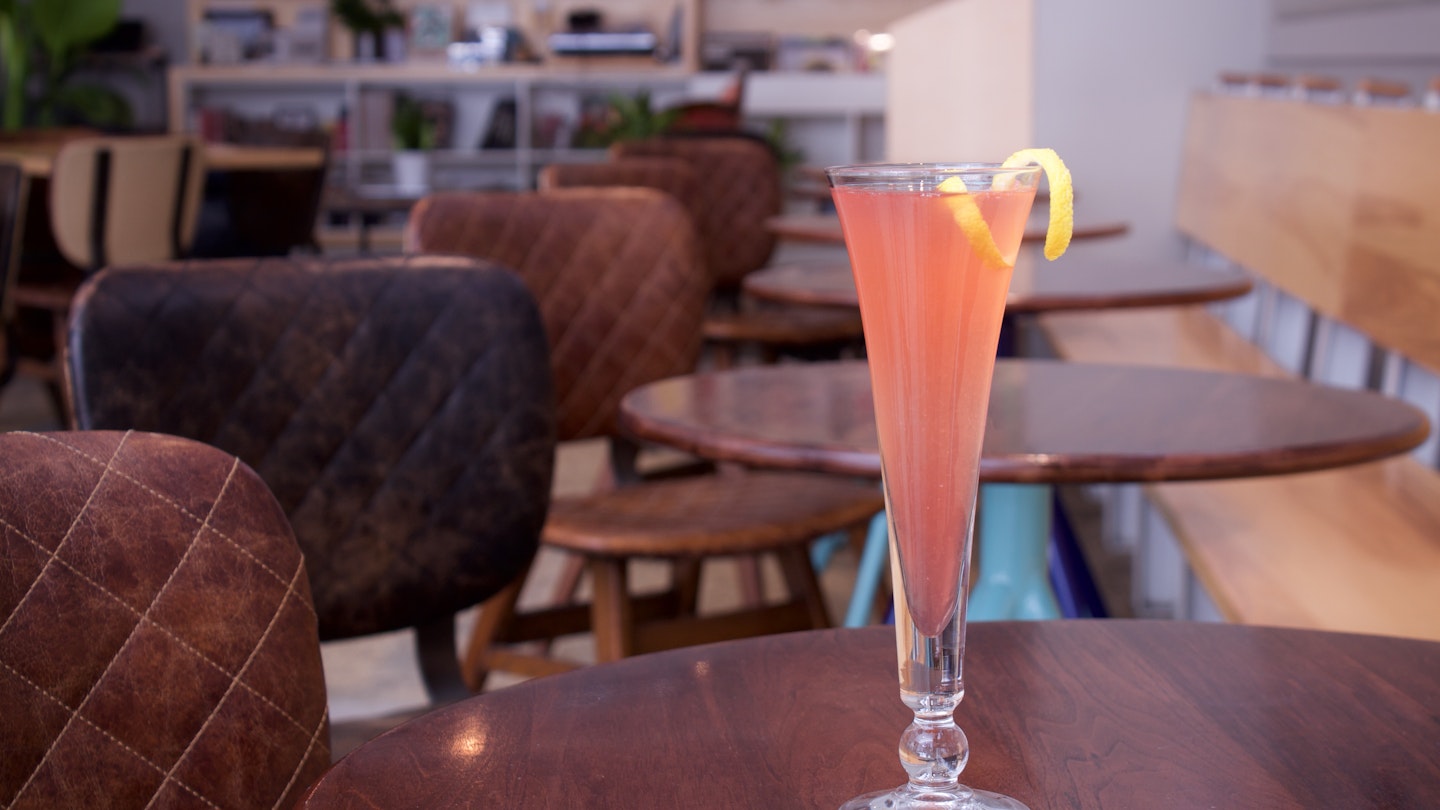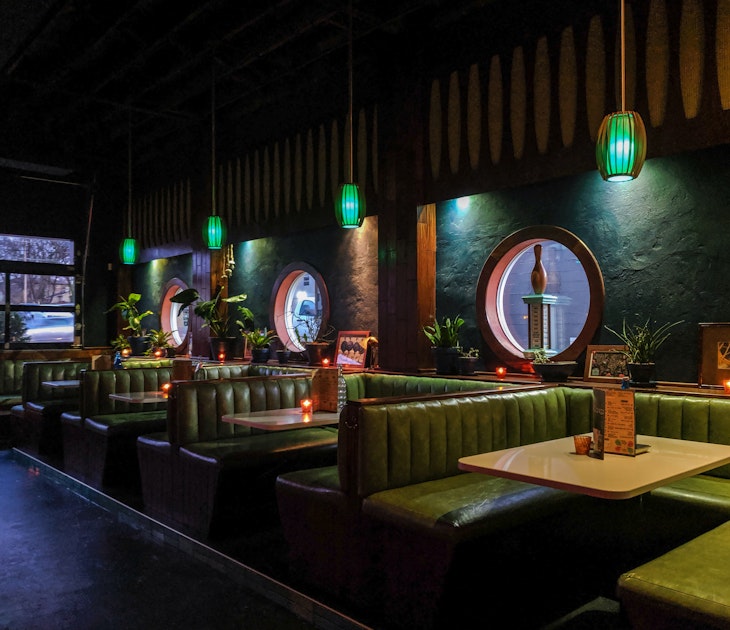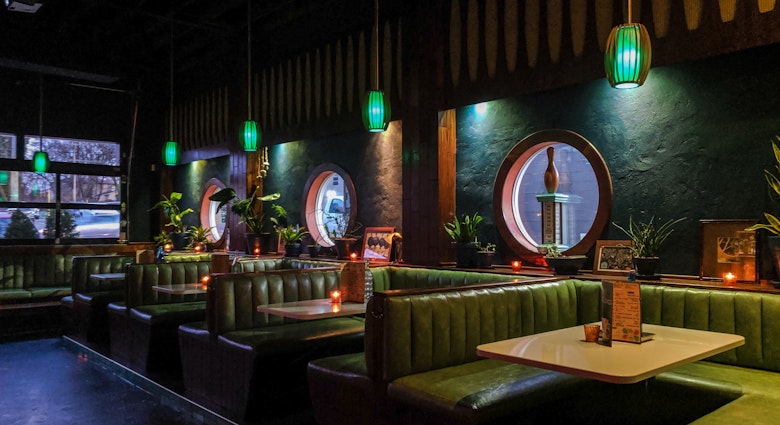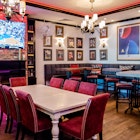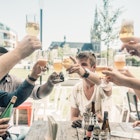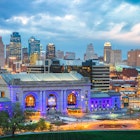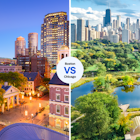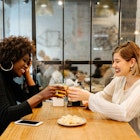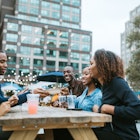From the Willis Tower (with its glass-floored cantilevered viewing platform that’s not for the faint of heart) to the Chicago Water Tower (one of the only buildings to survive the massive fire in 1871), the Windy City skyline is teeming with historic buildings. Now two Chi-Town bars are paying homage to them in liquid form.
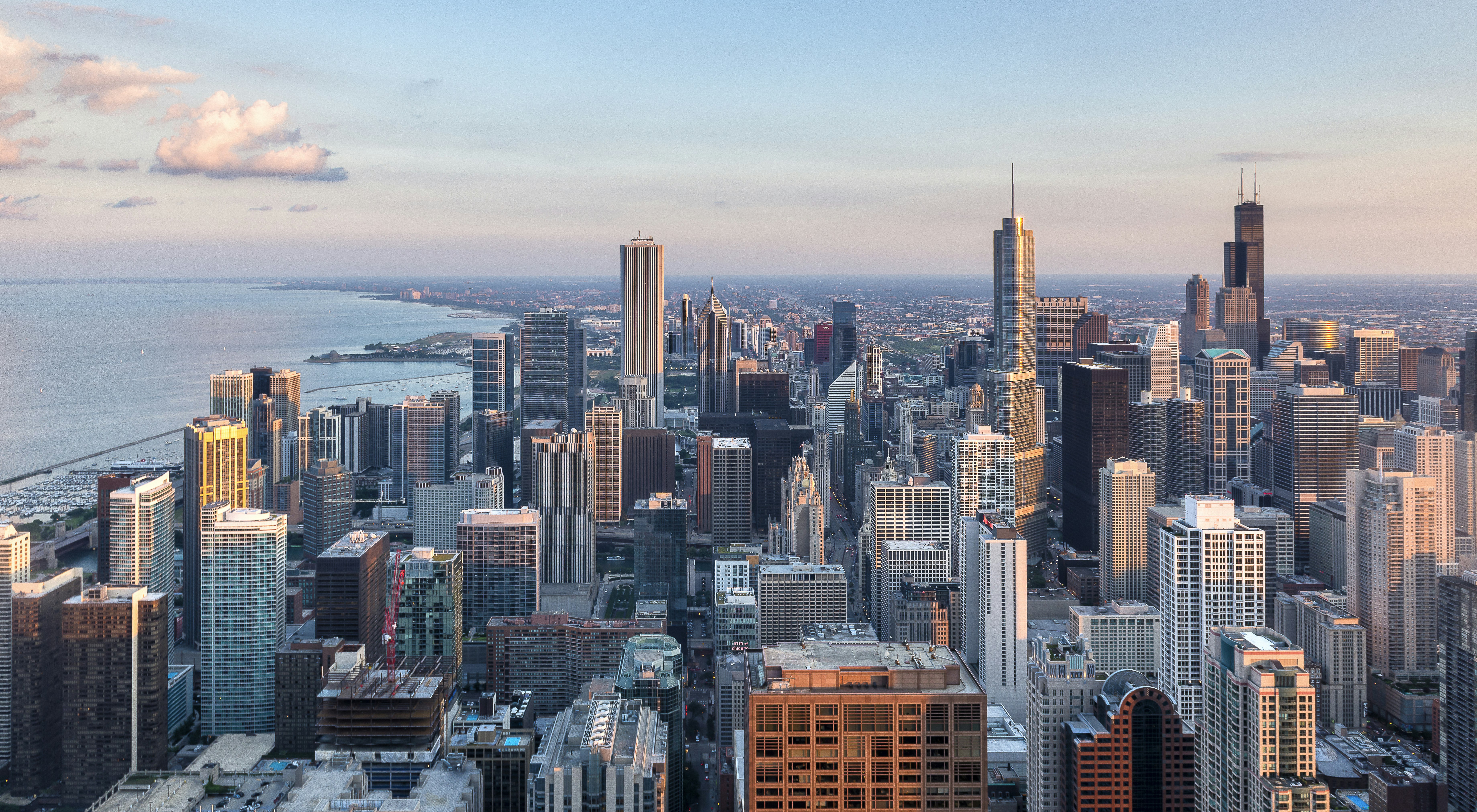
Sable Kitchen and Bar has unveiled a new menu of twelve drinks inspired by the city’s iconic buildings. Because the bar team believes there is a parallel between building structure and cocktail structure, the printed menu is an actual blueprint. “The theory of architecture states that a good building should satisfy three principles: durability, utility and beauty,” explains beverage director Jenee Craver. “This theory is completely relatable to cocktail design for me, because a cocktail should be able to hold up from your first sip to your last (durability), a cocktail created to be a Negroni should represent a Negroni (utility) and a cocktail should always be aesthetically-pleasing (beauty).”
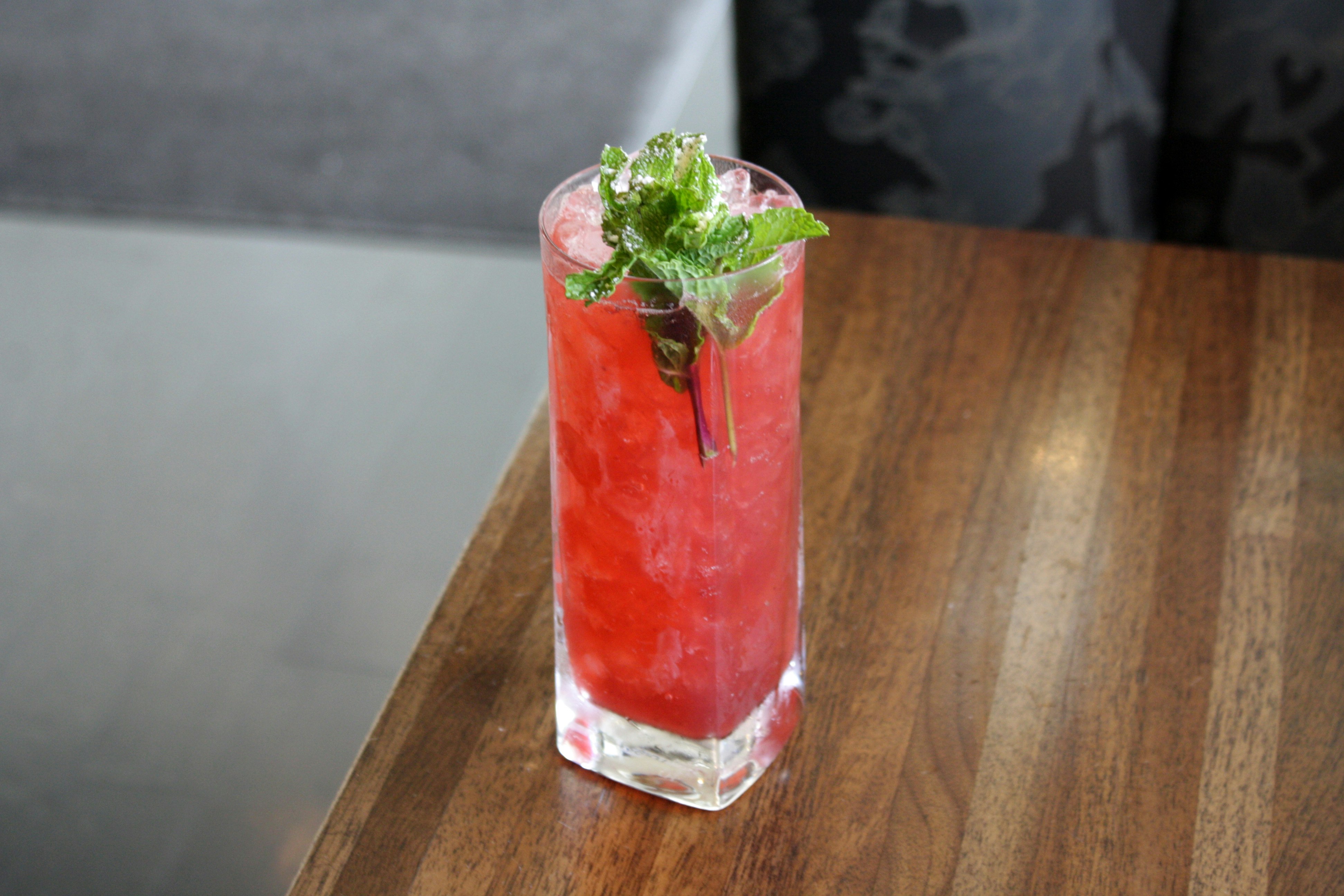
Craver is most excited about the Merchandise Mark, a Boulevardier riff created by bartender Riain O’Ceallachian inspired by the Merchandise Mart, which houses home showrooms and office space. The stone mug represents the limestone and terra cotta façade, the building’s ratio of 1:1:1 matches that of the drink’s amounts of Bourbon, vermouth and aperitif, and the drink is finished with an ice stamped with the log of two interlocked M’s--a reference both to the building’s art deco elements and the Maker’s Mark Bourbon that’s poured.
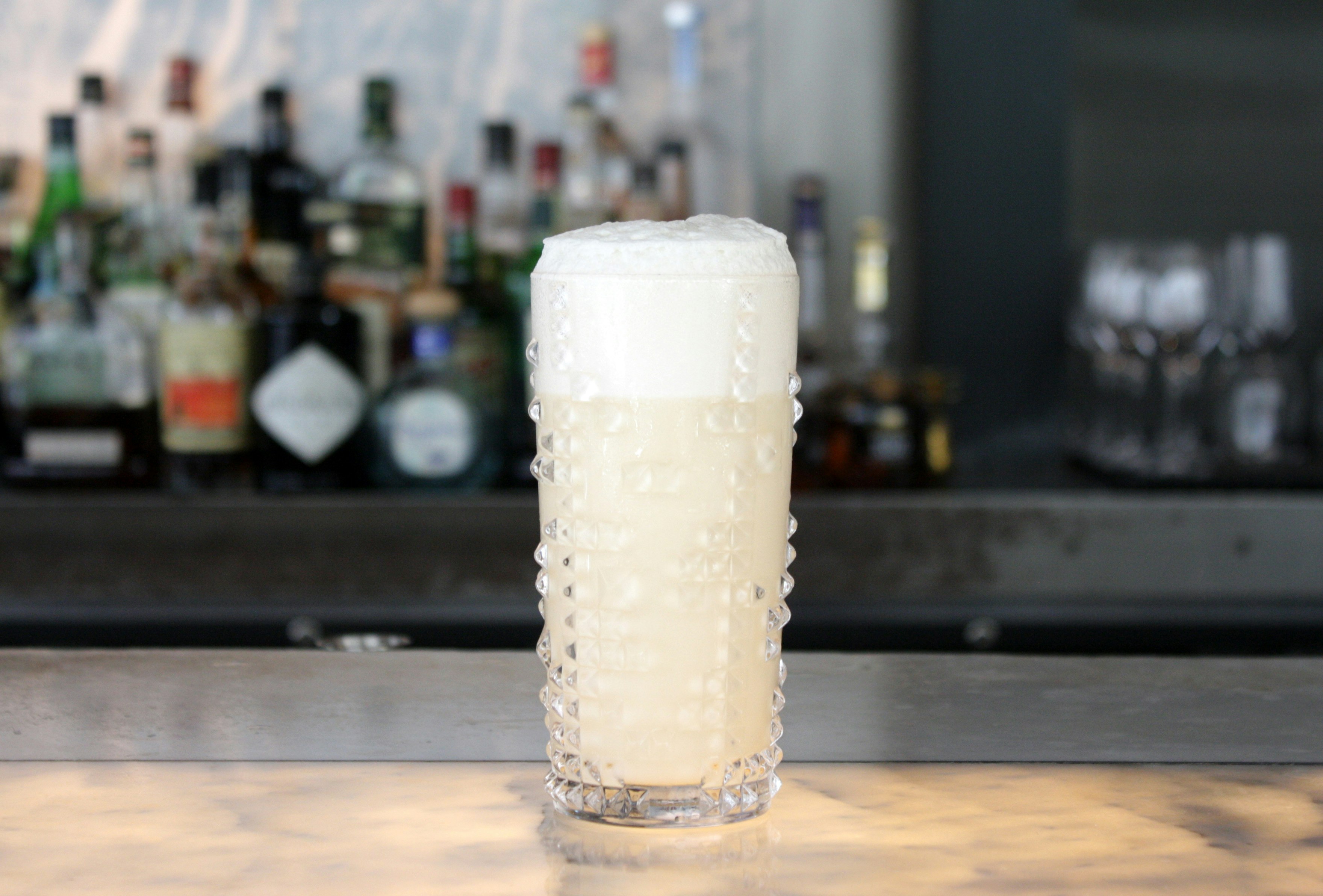
Watchu Talkin bout Willis, created by Dante Torres, is a nod to the iconic Willis Tower (formerly the Sears Tower) and its bundled tube system. A variation on the Ramos Gin Fizz, the libation has nine ingredients and its appearance mirrors where the tower tapers off. “The cocktail sturdily rises up and over the glass, much like the building does through the clouds,” Craver says. “The glassware also denotes the breakdown of the tube system and ties in the stylings of mid-century modernism.”
The John Hancock Building stands a half-mile-tall, with an international design style, a trussed tube system and x-bracing on the exterior to resist strong winds. The drink version, which mixes rum, falernum, cinnamon, demerara sugar, grapefruit and lime, is darkened with blackberries and served in sleek glassware. “This building houses the fastest elevator in North America; you can arrive to the 95th floor in thirty-eight seconds which is also how quickly you could drink this crushable cocktail,” Craver jokes.
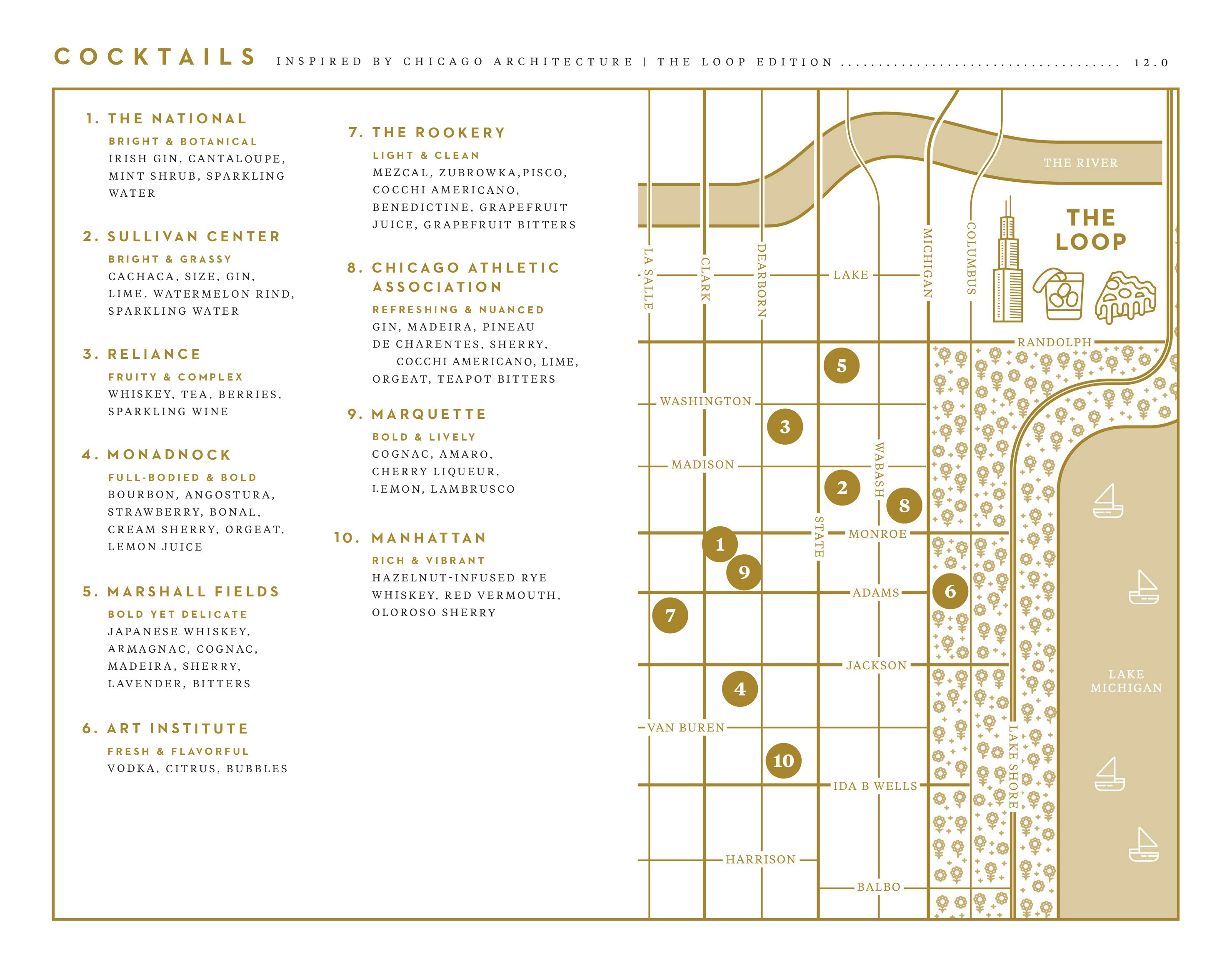
Revival Food Hall, an all-local, chef-driven 24,000-square-foot food hall on the ground floor of the The National, has also created a drinks list that imitates the art of Chicago’s buildings through cocktails. The menu is a collaboration between bar manager Mark Phelan and the bar team at Revival Cafe Bar (RBC) and focuses on the time period between 1890 and 1910 when the city’s Loop structures like The Art Institute and The Rookery were constructed.
“I wanted to create a sense of terroir with our cocktail menu, in that it should tell a story and be comprised of drinks pertaining directly to our location and history,” Phelan says. “Our staff and the majority of our guests work in or within walking distance of so many iconic buildings, and I hoped to draw attention to that commonality.” Each drink is presented with a postcard with the ingredients, building facts and inspiration.
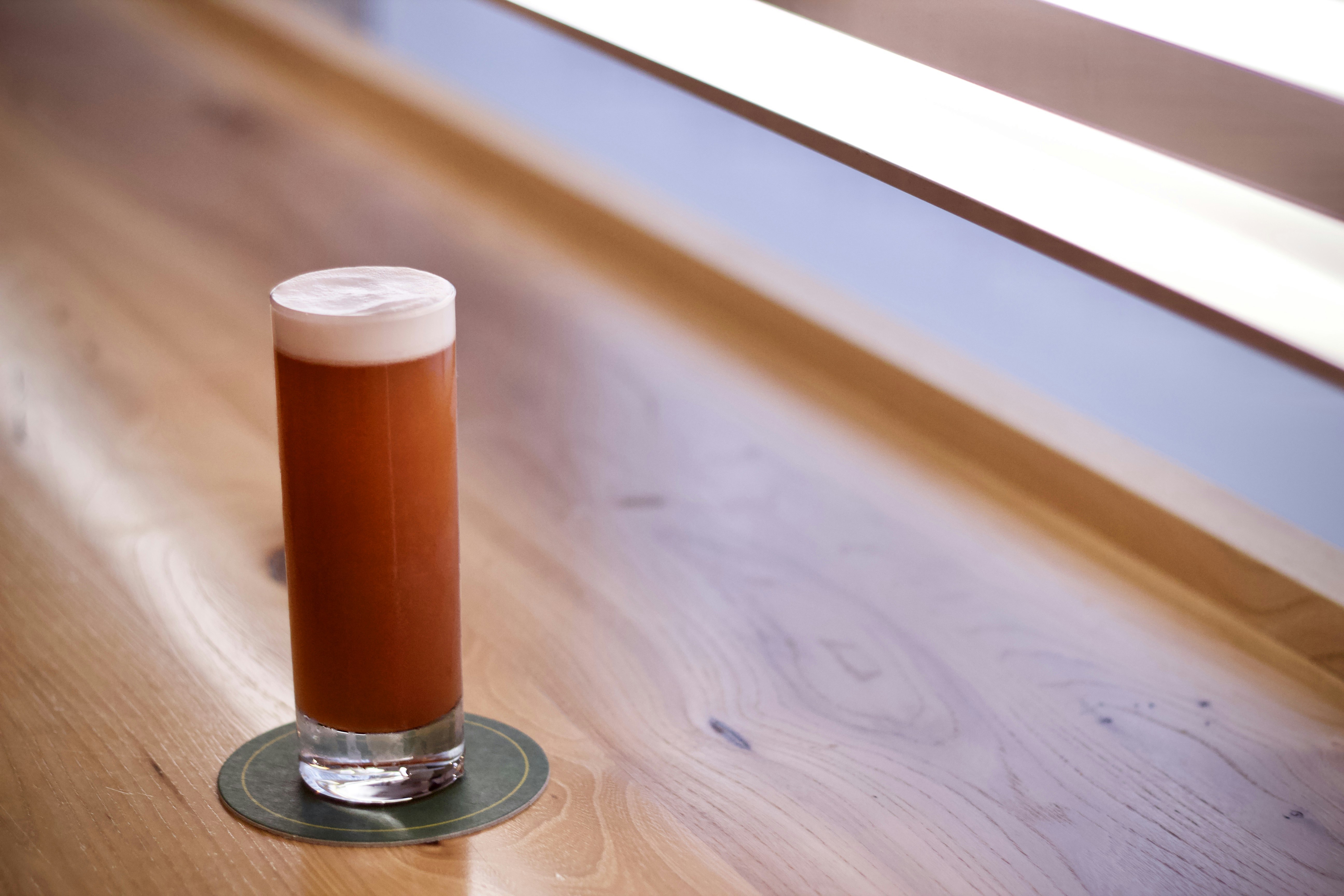
The 16-story Monadnock Building is based on a fruitier, more approachable Trinidad Sour, with strawberry-infused Bourbon, Angostura Bitters, Bonal, sherry, lemon juice and orgeat. Phelan says this building embodies the transition from load-bearing masonry walls to steel skeletal frame construction as it was constructed in two sections and uses both methods. “This simplicity in contrast with the styles of that period is bold and austerely beautiful,” he says. The sip is like it in color, density and sparing ornamentation.
The Sullivan Center, a Collins-like drink built in the glass with cachaça, gin, watermelon rind oleo-saccharum, lime and gentian amaro, is akin to the “clean, bright façade combined with the leafy green cast iron base of the building;” the overall flavor is dry and grassy, with a hint of melon rind and a crisp and clean finish.

And “The Reliance was inspired by the airy, weightless appearance of the building, with just a hint of smokiness to reflect a time when coal was the main fuel for industry,” Phelan explains. Similar to a French 75, it mingles blended and peated Scotch and housemade Earl Grey-berry syrup, topped with Cava. If you have a penchant for building design, the Chicago Architecture Biennal runs September 19, 2019 – January 5, 2020. The event has partnered with the Kimpton Hotel Palomar (where Sable Kitchen & Bar is located) and the Kimpton Gray Hotel to offer themed hotel packages.
